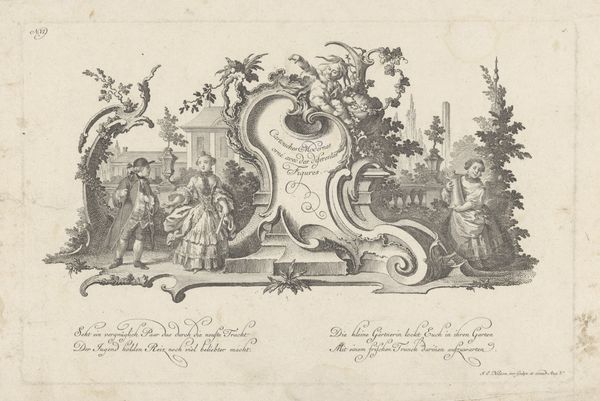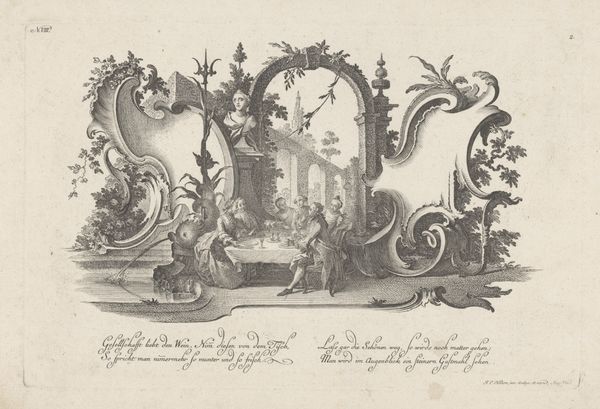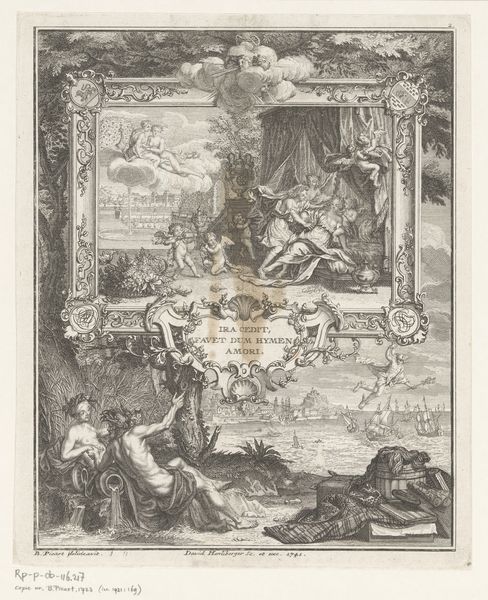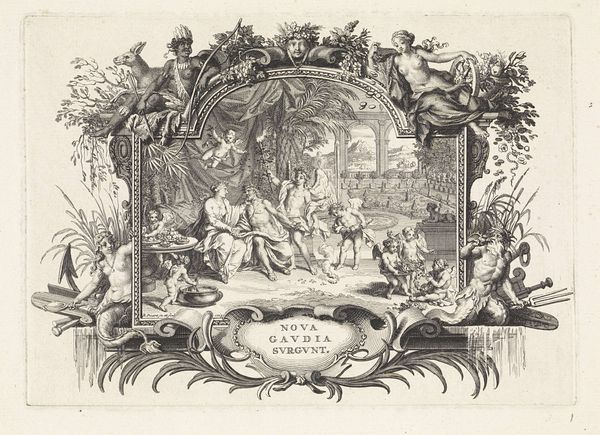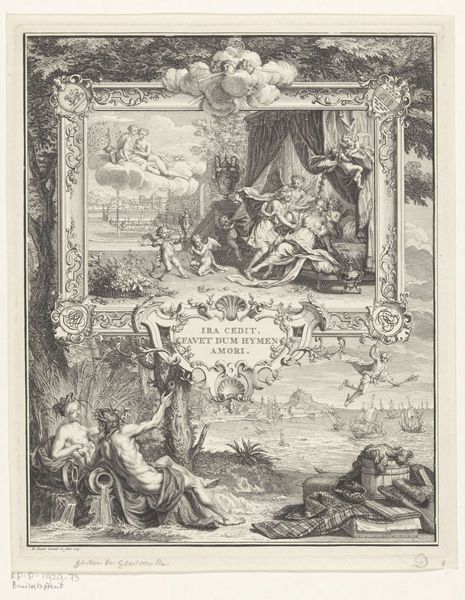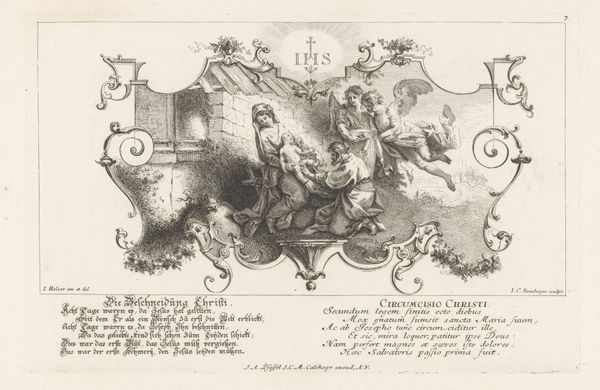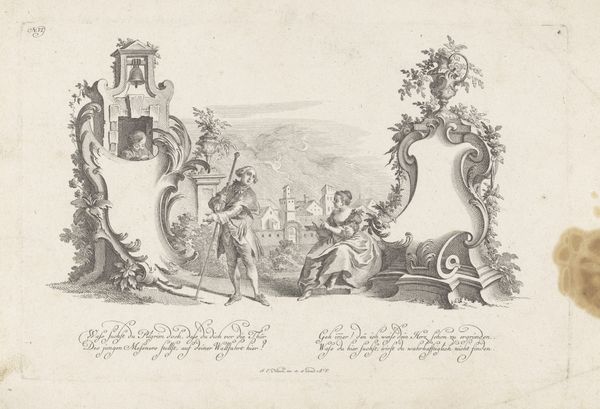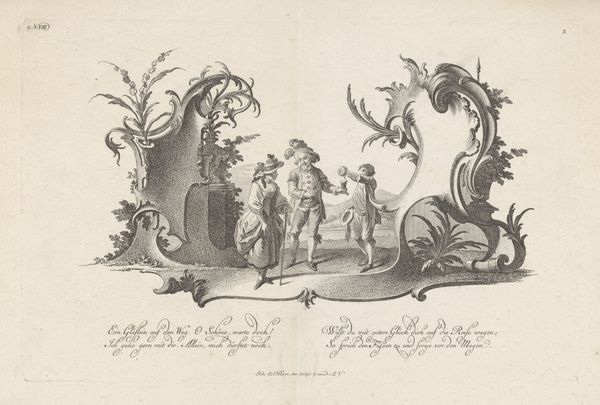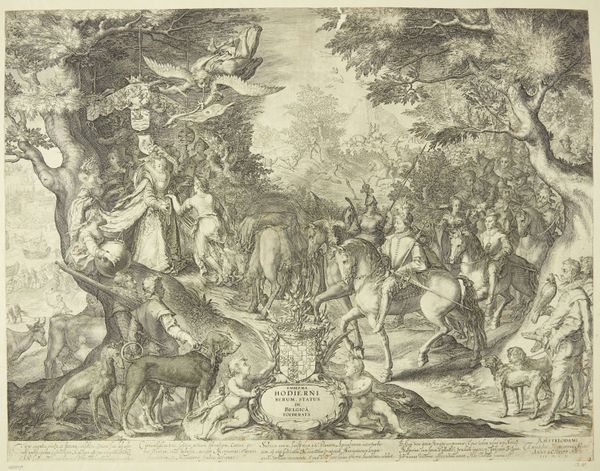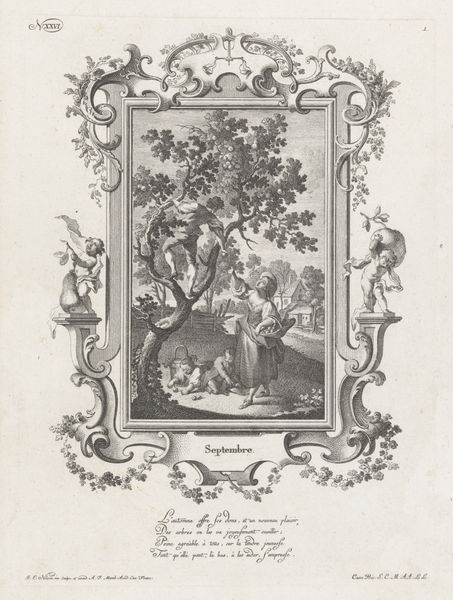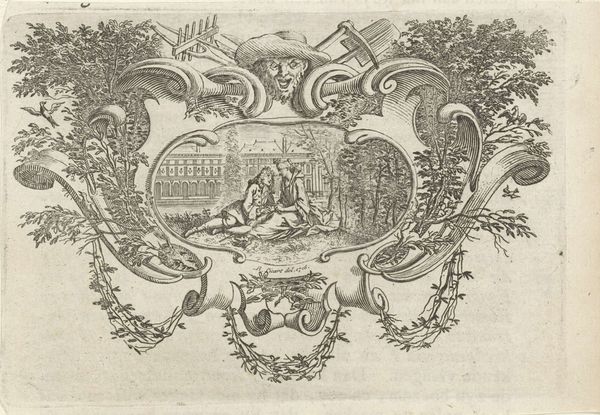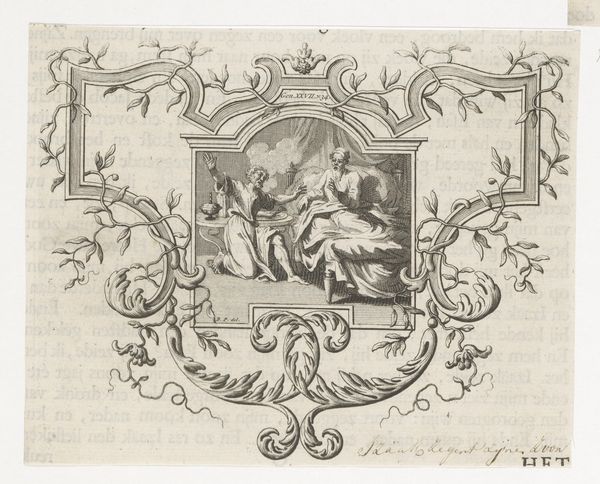
print, etching, engraving
#
portrait
# print
#
etching
#
landscape
#
genre-painting
#
engraving
#
rococo
Dimensions: height 190 mm, width 288 mm
Copyright: Rijks Museum: Open Domain
Editor: This print, "Kaartspel," dating from between 1731 and 1788, is an etching and engraving by Johann Esaias Nilson. The Rococo style gives it such a whimsical feeling. I’m intrigued by the artist’s choice of printmaking to depict this scene of leisure. How do you see the work's material and creation shaping its meaning? Curator: The choice of etching and engraving, a method of mass production, complicates our understanding of elite pastimes. It allows this image of leisure and supposed refinement to be widely distributed. The labor-intensive process is somewhat at odds with the frivolity depicted. Consider the social context: how does the medium democratize, or perhaps satirize, these supposedly exclusive activities? Editor: That’s a good point. By creating multiple copies, Nilson allows for wider access. Is he also making a statement about the value, or perhaps the superficiality, of such pastimes within a changing society? Curator: Exactly! Think about the availability of paper at this time and the distribution networks. The Rococo aesthetic, characterized by its ornamentation and artificiality, finds an interesting parallel in the highly crafted and reproducible nature of printmaking itself. Both are carefully constructed and deliberately artificial. What about the role of skilled labor here? Someone designed this image. Someone else engraved it. Consider the division of labor and its economic implications in Nilson’s workshop and beyond. Editor: I see. So, it’s not just about the elite playing cards, but also about the means of production and the hands that made it possible for me to even see this scene today. Thank you. That perspective adds so much more depth. Curator: Indeed. Considering the labor behind the art expands our understanding beyond the image itself. This connects directly to questions of value and consumption during the 18th century, adding a whole other dimension.
Comments
No comments
Be the first to comment and join the conversation on the ultimate creative platform.
